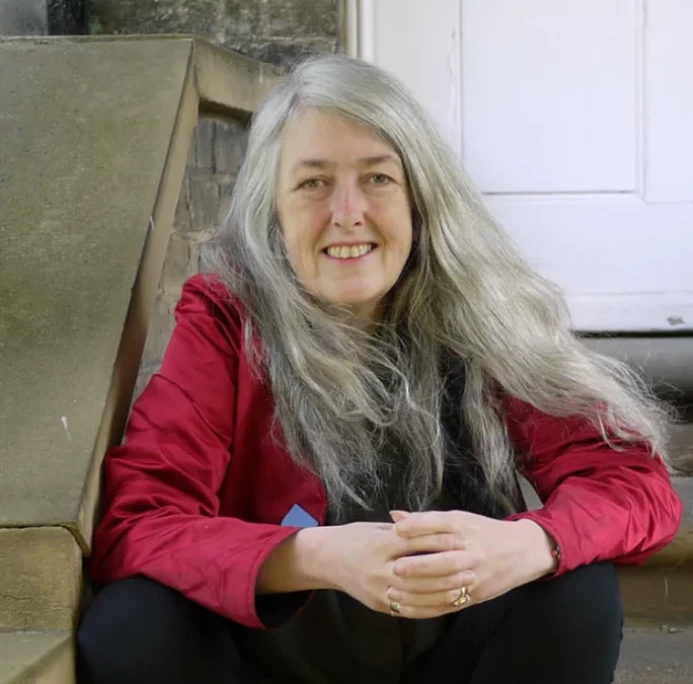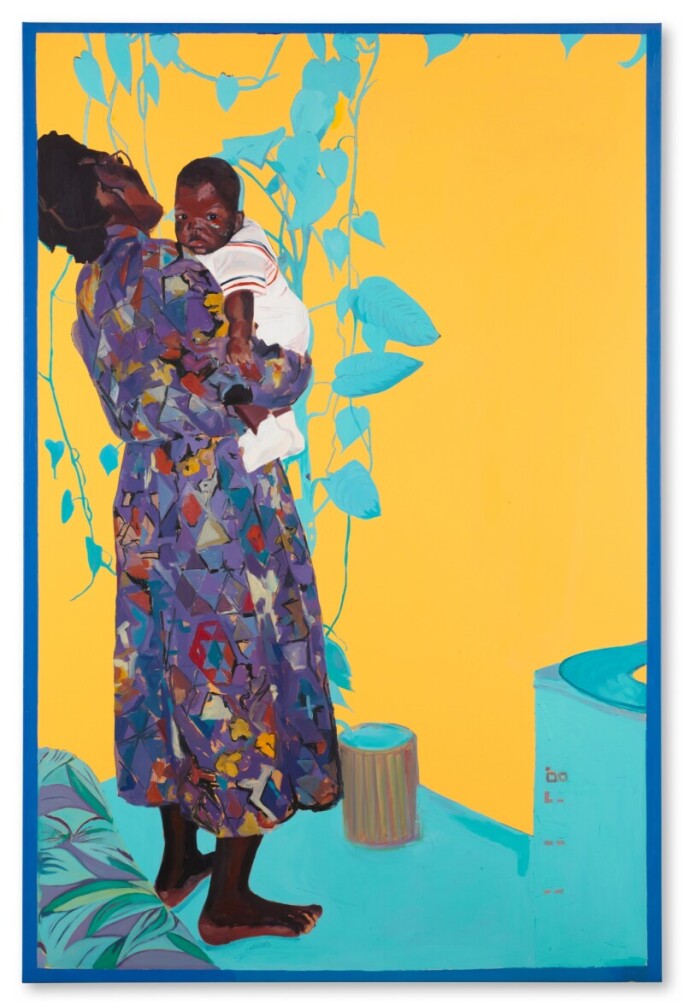O ver the last decade, the visibility of art made by women has evolved considerably. Across galleries, museums, biennales and art fairs, an extensive overhaul of historical narratives surrounding key movements and the artists credited with driving them is taking place, coupled with tangible, concerted efforts to support women entering the industry.
At last year’s Venice Biennale, 90 per cent of the artists included in Cecilia Alemani’s central exhibition The Milk of Dreams were female-identifying, or gender diverse, compared to 10 per cent in 1995 and between 26 per cent to 43 per cent in the 2010s. Meanwhile, in the UK, non-commercial solo exhibitions by women artists jumped from 40 per cent in 2016 to near 60 per cent in 2021. This can all be seen as part of a wider cultural discourse, calling for greater diversity of voices within, and increased accessibility to, the art world.

‘These are the issues of our time; issues around equality, gender, ethnicity,’ says Emma Baker, Head of Evening Sale, Contemporary Art (London), who is leading the Women Artists campaign. ‘We have never done something like this on such a grand scale, so it’s great to be able to put a spotlight on these issues. There is a huge amount going on in this area critically, and within the museum arena.'
To examine and reflect on this ongoing evolution, Sotheby’s in London is launching (Women) Artists this spring, encompassing a season of auctions, selling exhibitions and talks, each of which takes a perspective on the role of women in art. The campaign takes in a plenitude of fine art past and present, new work from leading artists, and through its series of panel discussions, insights from creatives and collectors, makers, and museum directors.
Spanning from late February into mid-March 2023, the programme begins with the London Sales and specifically, The Now Evening Auction on 1 March, which focuses on emerging artists gaining momentum on the primary market. This year’s selection includes Shara Hughes, known for her vibrant floral paintings, evocative of psychological spaces; Jana Euler, who paints intense close-crops of the body, often with unnervingly mirrored or repeated features; and Kudzanai-Violet Hwami, whose paintings explore her own experiences of geographical displacement and representation of the Black body.
Following International Women’s Day on 8 March, which will be marked by a panel discussion on women in art at the Islamic Art Biennale in Saudi Arabia chaired by Sotheby’s Mai Eldib, the (Women) Artists campaign blossoms into a series of curated exhibitions and auctions, focusing firmly on female artists, past and present. Leading the way is photographer Mary McCartney who launches Can We Have a Moment? on 9 March at Sotheby’s New Bond Street. This solo selling exhibition, curated by McCartney herself, presents selections of her work from across three decades, blending intimate portraiture of animals, landscapes, city views and friends and family in moments of quiet intimacy and joyful revelry.

‘I was mindful of the exhibition having some of the central themes that I’m interested in,’ McCartney tells Sotheby’s. ‘So, some of the works are more personal, emotional images, intimate. Some have more of a sensuality. And some have a behind-the-scenes feeling to them. Then there are a few which observe special moments in nature that arrest my attention. So, the whole remit [of my work] is in this exhibition, really.’
The London Sales themselves, taking place in March, feature works from number of important women artists past and present, such as Alice Neel, Tracey Emin, Barbara Kruger, Marlene Dumas, and Cecily Brown.
‘For an artist like Alice Neel, where issues of gender and female suffrage were not necessarily a driving force in her work, it is the historical context that is interesting,’ says Baker. ‘Neel did not receive the recognition that many of her male peers did, and it was not until she was well into her seventies, at the same time that the Women’s movement really began to make waves, that the establishment started to sit up and take notice of her immense oeuvre.
'In contrast we have a whole host of artists working today who are directly dealing with issues of objectified femininity and the male gaze, such as Cecily Brown and Jenny Saville, works by whom both feature in our Evening Auctions. Meanwhile, and influentially, prior to both of these artists, Barbara Kruger has been so important in reclaiming the narrative and shedding light on pre-existing visual power structures. She is more relevant than ever - even though she started making the work in the 1980s.' Neel, incidentally, is being celebrated this Spring too at the Barbican in London with 'Hot Off The Griddle', a much-anticipated solo retrospective - and has a rare work included in the Evening auction.
It is fundamental that this drive for visibility also allows for complexity to be celebrated within previously-marginalised groups. The selection of works across the (Women) Artists programme deftly highlights the manifold ways in which these artists make work. Sometimes, this is deeply connected to their lived experience. Sometimes it’s about having a voice on a subject unrelated to their identity that they may historically have been prevented from commenting upon.

Of course, this discussion is not confined to the Western art world - across the globe, statistics around equal representation and female agency can offer positive outlooks. For instance, in the flourishing art ecosystems of the Middle East and North Africa, women are strongly represented in key gallery and museum positions - indeed, within Asian and Arab countries, around 80 per cent of galleries and institutions were founded by women. Contemporary artists from the Middle East such as Hayv Kharaman and Lalla Essaydi have also recently been popular at auction and within museum collections, while late artists including Monir Farmanfarmaian, Etel Adnan and Huguette Caland have seen renewed interest.
'Over the past century or so, we have been witnessing a gradual shift, from women primarily being seen as objectified bodies within art, to becoming empowered makers of it'
And as artists, while women’s voices have largely been absent from the art historical narrative, their bodies have often taken centre stage, refracted through the male gaze, as muses. But over the past century or so, we have been witnessing a gradual shift, from women primarily being seen as objectified bodies within art, to becoming empowered makers of it.
One example of a groundbreaking female artist, whose story demonstrates the trauma and danger faced by many women seeking to control their creative agency, is 17th century Italian painter Artemisia Gentileschi. A woman who fought to be in command of her image she was subjected to a traumatic trial and torture, after being raped by an older friend of her father’s. Her work subsequently effected a powerful act of defiance, in which her physically strong female subjects, sometimes painted in her image, rejected the frailty that many of her male contemporaries bestowed upon their muses.
This topic -amongst others - forms a central strand in Festival of Talks - Amplifying Women’s Voices, taking place at Sotheby’s New Bond Street, between 23 February - 15 March. With guests from around the world, ranging from authors and broadcasters Shahidha Bari and Mary Beard to designer Paloma Picasso, artists Tracey Emin, Sonia Boyce, and Mary McCartney and museum director Iwona Blazwick alongside many others. The discussions address fundamental issues affecting the state of the art world today, tacking across a number of topics. Panellists will debate the historic view of women from passive muses to recognised artists, from being virtually invisible in the labyrinthine structures of the art industry to occupying positions of power, consequence and influence. And in these subjects, a number of fascinating stories and themes emerge.

The talks will explore the lives and legacies of artists such as Paula Modersohn-Becker, the first woman who is known to have painted herself nude, and Laura Knight who famously depicted herself painting a naked model, subverting the cliched role of fully dressed male artist with exposed muse. Such painters were pivotal in asking viewers to rethink how and why we look on women’s bodies. Another panel discussion, ‘Women and Power’, sets out to explore historical depictions of women in art, spanning the ages from Medusa to Hillary Clinton. Meanwhile, in ‘Shaping Taste, Shaping Society’, guests including Paloma Picasso will explore the legacies of some of the most famous women collectors and tastemakers in art history, from Catherine de Medici to Peggy Guggenheim and into the present era.
'The philosophy of entire collections are now focused on this very dialogue surrounding women artists.'
‘There has always been a strain of collectors who have focused on these important issues,’ Baker says. ‘But as a focus within people’s collections, it has really developed. The philosophy of entire collections are now focused on this very dialogue surrounding women artists.'

Offering a fresh feminist perspective on a renowned painter of emotional force, in 'Breathe and Feel, Suffer and Love' on 23 February, Tracey Emin will debate how and why Edvard Munch’s pursuit of emotional truth changed art forever, highlighting how women shaped this quest, at a time when relations between the sexes were changing radically.
While it is important to promote the equal representation of women in the arts, there are a few things to bear in mind. Issues of intersectionality should always be considered, to ensure that it is not just white cis-gendered women who have a platform. This is not only about ensuring opportunities for artists of all backgrounds (although this is, of course, imperative), but also allowing for different types of experience to be shared. Art enables us to understand the world around us. But if this is only coming from a limited set of voices, the cultural understanding of who we are fails to include swathes of the population.
It is also essential that gender equality does not become a passing trend. Creating a more equal, diverse art world should be a long-term goal. This runs from the artists selected to exhibit in blockbuster exhibitions, to the people chosen to direct museums, the writers commissioned to give their voice to art criticism, and the collectors driving the market.
‘I feel like it’s a trend that’s here to stay,’ affirms Baker. ‘As the dialogue has changed, I think people’s attitudes to these artists has revolutionalised dramatically. It’s very de rigueur - but I don’t think that’s a bad thing.’







